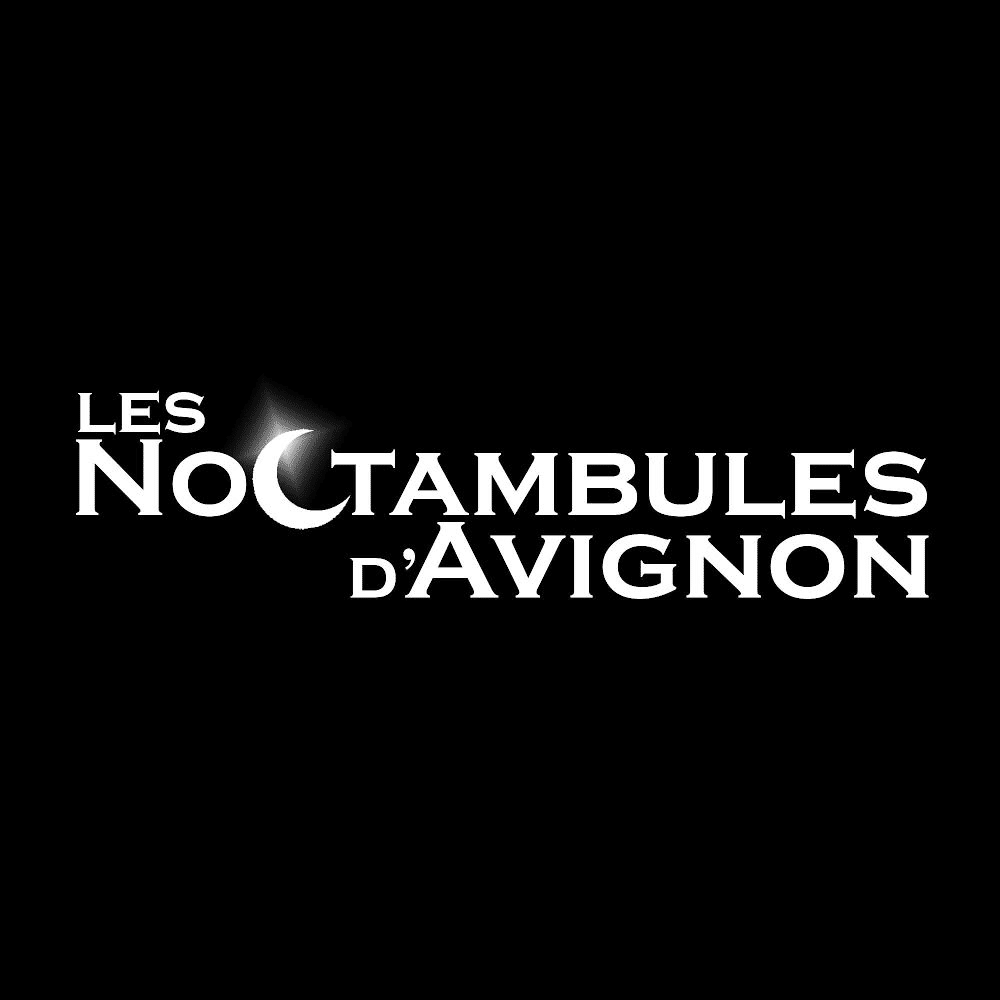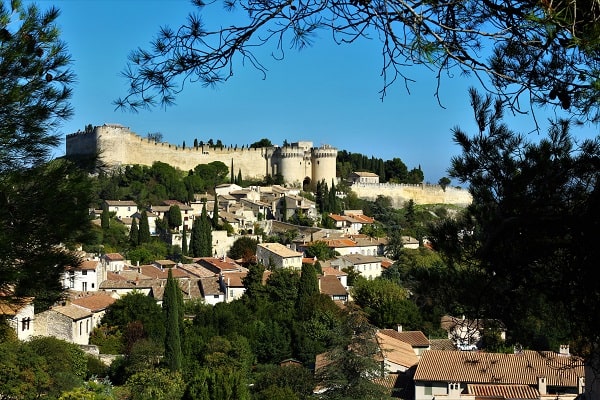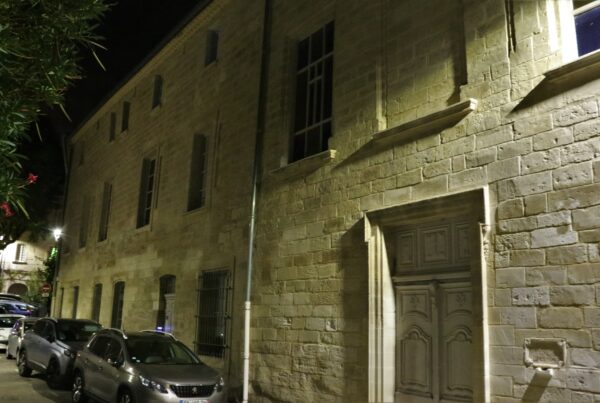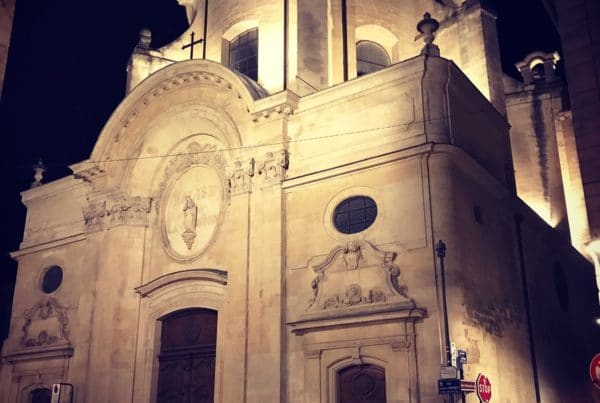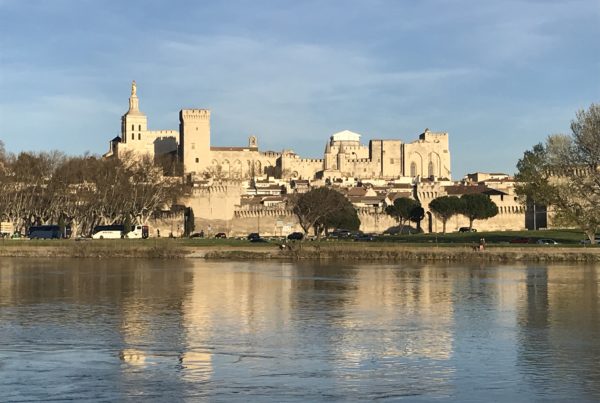Villeneuve lez Avignon suffers from the proximity of its big sister, Avignon. Even if Villeneuve lez Avignon has grown up in the shadow of the Popes’ Palace, it has developed its own culture, history and heritage. Discover this city which is unique in France.
Villeneuve lez Avignon or Villeneuve lès Avignon ?
It can be confusing for a person coming to the region for the first time to see that there are several spellings for one city.
It all comes down to how to spell the preposition.
Let’s start with the preposition les. This one can’t be used because it’s an article that means that the city has something. As in Aix les Bains, the preposition notes that the city of Aix has baths.
Then there is lez or lès. In both cases, this preposition comes from the Latin “latus”. When placed between toponyms, it means “next to”, “near”. Maurice Grevisse, who is the historical reference of the French language, qualified the replacement of lez by lès as abusive. The official writing of the city that concerns us here is Villeneuve lés Avignon. This is in contradiction with the etymology. That’s why I will use “lez” when I name this city.
Unique history of this small town
Even though there are traces of human presence on the territory of the city as early as the Neolithic period, it is in the 6th century that the city will really develop.
Casarie, the involuntary founder of the city
According to tradition, Casarie, wife of the bishop of Avignon, decided to retire as a hermit on Mount Andaon. After her death, on December 8, 586, a tomb was erected as well as a small chapel. Very quickly, this place becomes a point of veneration and a Benedictine community is called by Valens, the bishop of Avignon and widower of Casarie. The purpose of this community is to supervise the cult that is born around Casarie and her tomb.
Around 980, an abbey was built on Mount Andaon. The pope approved this construction in a papal bull of January 999. This was the birth of the Abbey of Saint Andrew. On the foothills of the abbey will be created a village from the 11th century which will be called Bourg Saint André.
The evolution of the city thanks to the kings of France
The kings of France will accelerate the development of the city.
Louis VIII the Lion
With the construction of the famous bridge of Avignon between 1177 and 1185, the village was equipped with a wall to protect itself from the Avignon inhabitants. This was not enough because the Bourg was annexed to Avignon at the beginning of the 13th century. Raymond V, the Count of Provence confirmed the annexation in 1210.
It is the king of France who will come to the aid of the inhabitants. In 1226, Louis VIII the Lion launched the Albigensian crusade against the Cathars. He left for the lands of Raymond VII, the Count of Toulouse, who was accused of harboring the Cathars. When he arrived with his army at the gates of the city of Avignon, its inhabitants refused him passage. The consequence will be the siege of the city during 3 months. During this period, the king of France will be the guest of the abbot of Saint André. The latter will negotiate a treaty of parage which will place it under the protection of the crown of France. Even if this first treaty is never applied, it will allow the Bourg to leave the domination of Avignon.
Philip IV the Fair
The king of France will inherit half of the lordship of Avignon. He will give this part to his cousin the king of Naples, count of Provence. In return, he will receive Anjou and Maine. Even if he gave up his possessions on the left bank of the Rhône, Philip the Fair did not abandon the region. He signed a new treaty of parage with the abbey of Saint André on July 11, 1292. This treaty included the construction of two royal fortresses, the sharing of revenues between the crown and the abbot, the creation of a common seal which is still the symbol of the city today.
After the signing, the first fortress was built at the mouth of the bridge. Today, only the Philippe le Bel tower remains. With this construction, the king annexed the entire bridge and its revenues. Even though the people of Avignon protested, this became a fact.
From 1293, the construction of a royal basid named Ville Neuve Saint André near Avignon. For the king, it was an opportunity to compete with Avignon and even surpass it.
John II the Good and Charles V
Even if it was Philip the Fair who signed the treaty of parage, it was his successors who built the fort Saint André. John II the Good began the work and Charles V finished it. We can think that the installation of the Popes in Avignon allowed the construction of this fort.
The Popes will accelerate the development of Villeneuve lez Avignon
From 1305, the Popes will settle in Avignon. As we have just seen with the fort Saint André, this installation had a lot of incidences on the city. The cardinals and the Popes will build 14 palaces on the lands of Villeneuve lez Avignon.
Innocent VI will transform his cardinal livery into a chartreuse in 1356. The Carthusian monastery of Val de Bénédiction has become the most interesting monument to visit in Villeneuve lez Avignon.
From the Popes to the modern era
After the departure of the Popes of Avignon, Villeneuve lez Avignon will keep its status of royal city. It remains the favorite place of vacation of the bourgeois and the local nobility.
During the Revolution, it loses its status and the incomes that accompanied it. It becomes a chief town of canton. It had to give up the island of Barthelasse to Avignon in 1852. The arrival of the train in Avignon as well as the construction of a bridge developed the trade between the two cities as well as between the two regions.
It is now a small town where life is good.
The monuments to visit
Because of its past, the city has an important patrimonial wealth. You should not neglect the visit of Villeneuve lez Avignon when you are in the region.
The Philippe the fair tower
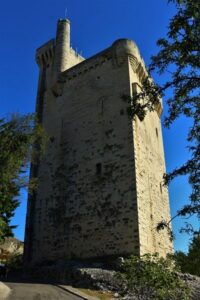
It is the last vestige of the castle built by Philippe IV le Bel from 1292. The visit of this tower will allow you to discover the construction techniques of the time. Do not miss the view from the terrace on the papal city. It is for me the most beautiful. An ideal place for photos and selfies. As we would say now, it’s an Instagramable place.
The Pierre de Luxembourg Museum
Even though, in my opinion, this museum is completely underused both architecturally and culturally, it’s still worth a stop. The small entrance fee compensates for this lack of emphasis. The museum has very beautiful paintings by the Mignard brothers as well as beautiful furniture from the Chartreuse.
The collegiate church and the cloister
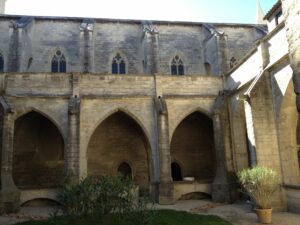
It is the nephew of the pope Jean XXII, Arnaud de Via who made build this collegiate church in the XIVth century. It has many paintings and sculptures and does not have to be ashamed of the comparison with the churches of Avignon. Located in the heart of the city, it is a visit not to be missed. Be careful, the church is always very active so it is possible that a wedding, a baptism or a burial will take place there.
The fort Saint André
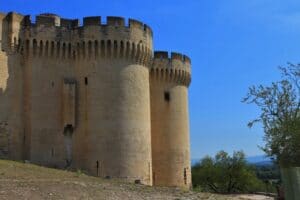
We have already talked about it, it is the second fortress that the kings of France will erect in Villeneuve les Avignon. Its strategic position gives an impressive view on Avignon and the Rhône. The terrace located at the top of the entrance tower is ideal for the amateurs of photographs. The route inside the fort has been designed to make you discover the life in the Middle Ages as well as the defenses with which the fort is equipped.
The Gardens of the Abbey
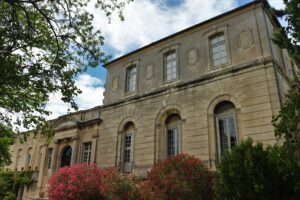
As a nod to history, the fort is still divided in two. The fort is public and the abbey and its gardens are private. The gardens have been awarded the “jardin remarquable” label and have been managed in a sustainable and responsible manner for several years. It is a bubble of freshness that invites to relaxation and contemplation. Ideal during the festival to recharge your batteries between two plays. The owners organize guided tours inside the abbey. Don’t forget that it is here that the history of Villeneuve lez Avignon began.
The Carthusian monastery of Val de Bénédiction
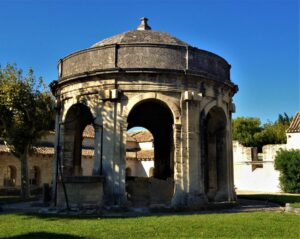
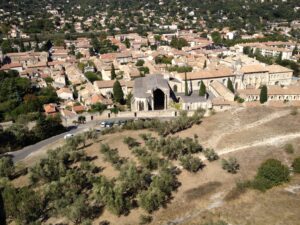
If I kept this monument for the end it is because it is for me the most beautiful building to visit in Villeneuve les Avignon.
If you have to visit only one monument during your stay, it is this one that you must privilege.
We owe this magnificent architectural complex to Pope Innocent VI. You will discover the monastic life in the Middle Ages and the different evolutions especially during the Revolution.
The visit can end with a drink in the gardens.
What to do in Villeneuve lez Avignon
Villeneuve lez Avignon is not only a tourist town, it is also a dynamic town.
Every Thursday, a large market allows you to discover local flavors and seasonal products.
On Saturdays, the market place becomes a big flea market very famous in the region.
Twice a year, the downtown area becomes a huge garage sale where you can find something for everyone.
During the month of July, the city organizes a theater festival around the theme of “itinérance”. The plain of the abbey hosts a giant tent as well as the Bobart and many animations.
How to get to Villeneuve lez Avignon?
The city has a good connectivity with Avignon. You can therefore take advantage of the accessibility of Avignon. Between the two cities, there are two bridges for vehicular or bicycle access and the TCRA line 5.
How to discover the city?
This city is so unique, that Les Noctambules d’Avignon had to propose some tours to discover it.
In order for you to have a complete experience, we propose two tours:
Between Kings and Popes: this tour takes place on Tuesday mornings for 1h30. It allows you to discover the whole history of the city and its dynamism.
La night owl of Villeneuve lez Avignon : at nightfall, we invite you to discover the architectural and historical treasures of the city in an intimate atmosphere. The small streets of the city will have no more secret for you.
Don’t hesitate to contact me if you want more information about Villeneuve lez Avignon, we will be happy to help you prepare your stay.

